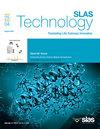使用密集层深度学习模型对肾脏疾病进行分类。
IF 3.7
4区 医学
Q3 BIOCHEMICAL RESEARCH METHODS
引用次数: 0
摘要
慢性肾脏疾病(CKD)是一种致残和潜在致命的疾病,早期诊断和彻底的管理技术对患者至关重要。研究主要集中在检测肾脏疾病的机器学习和深度学习系统上。隐藏层、激活函数、优化器和epoch等深度学习平台对于自动检测这些疾病也是必要的。该模型的准确率达到99%,准确率、召回率和F1分数均为0.99,具有较高的可靠性。此外,该模型显示出较强的一致性和稳健性,如ROC AUC得分0.9821和马修斯相关系数0.9727等指标。实验使用具有24个独立字段和独立值的公开访问数据集作为慢性或非慢性类,基于优化的架构构建密集分层的深度神经网络。结果表明,与其他模型相比,所提出的模型是最准确的。本文章由计算机程序翻译,如有差异,请以英文原文为准。
Classifying kidney disease using a dense layers deep learning model
Early diagnosis and thorough management techniques are crucial for people with chronic kidney disease (CKD), a crippling and potentially fatal condition. Research has focused a lot on machine learning and deep learning systems for the detection of kidney diseases. Deep learning platforms like hidden layers, activation functions, optimizers, and epochs are also necessary for the automatic detection of these diseases. The proposed model achieved 99 % accuracy, with a precision, recall, and F1 score of 0.99, indicating highly reliable performance. Additionally, the model demonstrated strong agreement and robustness, as reflected in metrics such as the ROC AUC score of 0.9821 and Matthews Correlation Coefficient of 0.9727. The experiment used a publicly accessible dataset with 24 independent fields and independent values as chronic or not-chronic classes, building dense-layered deep neural networks based on an optimized architecture. The outcomes demonstrated that, when compared to the other models, the proposed model was the most accurate.
求助全文
通过发布文献求助,成功后即可免费获取论文全文。
去求助
来源期刊

SLAS Technology
Computer Science-Computer Science Applications
CiteScore
6.30
自引率
7.40%
发文量
47
审稿时长
106 days
期刊介绍:
SLAS Technology emphasizes scientific and technical advances that enable and improve life sciences research and development; drug-delivery; diagnostics; biomedical and molecular imaging; and personalized and precision medicine. This includes high-throughput and other laboratory automation technologies; micro/nanotechnologies; analytical, separation and quantitative techniques; synthetic chemistry and biology; informatics (data analysis, statistics, bio, genomic and chemoinformatics); and more.
 求助内容:
求助内容: 应助结果提醒方式:
应助结果提醒方式:


